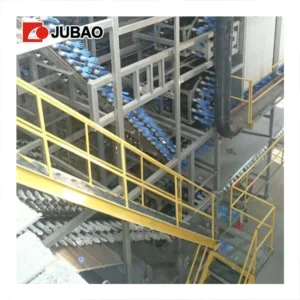Where Are Medical Gloves Manufactured?
Table of Contents
Introduction
The global medical glove industry represents a critical component of healthcare infrastructure worldwide, with annual production reaching hundreds of billions of units. Understanding where medical gloves are manufactured provides insight into global supply chains, quality standards, and the factors that influence availability and pricing in healthcare markets.
Medical glove manufacturing is highly concentrated in specific geographic regions, with Southeast Asia dominating global production. This concentration has significant implications for healthcare systems worldwide, particularly highlighted during the COVID-19 pandemic when supply chain vulnerabilities became apparent.
Southeast Asia: The Global Hub
Southeast Asia has established itself as the undisputed center of global medical glove manufacturing, producing approximately 65-70% of the world’s supply. This dominance stems from several strategic advantages that have developed over decades of industrial growth and specialization.
The region’s proximity to natural rubber plantations provides a fundamental raw material advantage for latex glove production. The tropical climate of Southeast Asian countries creates ideal conditions for rubber cultivation, ensuring a steady supply of high-quality natural latex. This geographic advantage significantly reduces transportation costs and supply chain complexity for manufacturers.
Additionally, the region benefits from established manufacturing expertise, developed infrastructure specifically designed for glove production, and competitive labor costs that make large-scale production economically viable. Government support through favorable policies and incentives has further strengthened the region’s manufacturing capabilities.
The concentration of medical glove manufacturing in Southeast Asia has created extensive supply chain ecosystems, with numerous suppliers of chemicals, machinery, and packaging materials clustering around major production centers.
Malaysia: The Leading Producer
Malaysia stands as the world’s largest medical glove manufacturer, accounting for approximately 60-65% of global production. The country’s glove manufacturing industry has evolved from modest beginnings in the 1970s into a sophisticated, high-volume operation that supplies healthcare facilities worldwide.
Malaysian glove manufacturers have achieved this dominant position through substantial investment in automation, quality control systems, and production capacity expansion. Major manufacturers operate state-of-the-art facilities capable of producing billions of gloves annually, with some individual companies producing over 100 billion gloves per year.
The country’s glove industry benefits from strong governmental support, including research and development incentives, workforce training programs, and infrastructure development. Malaysia has also established rigorous quality standards that align with international healthcare requirements, building trust with global buyers.
Key Fact: Malaysia is home to the world’s largest medical glove manufacturers, including Top Glove, Hartalega, and Supermax, which collectively serve healthcare systems across more than 195 countries.
The Malaysian glove industry employs hundreds of thousands of workers and represents a significant portion of the country’s manufacturing exports, making it a cornerstone of the national economy.
Thailand: Second Largest Manufacturer
Thailand ranks as the world’s second-largest medical glove producer, contributing approximately 15-20% of global supply. The country’s rubber glove industry has grown steadily, leveraging its position as one of the world’s largest natural rubber producers.
Thai manufacturers have developed particular expertise in specialized glove products, including surgical gloves and examination gloves with specific performance characteristics. The country’s manufacturing sector benefits from well-developed industrial zones, reliable infrastructure, and a skilled workforce with extensive experience in rubber processing.
Thailand’s glove manufacturers have invested heavily in technological advancement and automation to remain competitive with Malaysian producers. The country has also emphasized environmental sustainability in manufacturing processes, implementing cleaner production methods and waste reduction initiatives.
The Thai government has supported the industry through favorable trade policies and has promoted Thailand as a reliable alternative source for medical glove procurement, particularly valuable for buyers seeking supply chain diversification.
China: Rising Manufacturing Power
China has emerged as a significant player in medical glove manufacturing, particularly in nitrile and vinyl glove production. While historically focused on domestic consumption, Chinese manufacturers have rapidly expanded production capacity and improved quality standards to compete in international markets.
Chinese glove manufacturing benefits from the country’s extensive chemical industry infrastructure, which supports nitrile glove production with readily available raw materials. The country’s manufacturing expertise, developed across numerous industries, has translated into increasingly sophisticated glove production capabilities.
During the COVID-19 pandemic, China dramatically expanded its medical glove production capacity, with numerous new facilities coming online to meet surging global demand. This expansion positioned China as an important supplementary source for medical gloves, particularly for nitrile varieties.
Chinese manufacturers have also made significant strides in achieving international quality certifications, including FDA approval and CE marking, making their products acceptable for healthcare use in major markets worldwide.

Other Manufacturing Regions
While Southeast Asia and China dominate global production, medical gloves are also manufactured in other regions, though at much smaller scales. These regional manufacturers serve important roles in local markets and provide geographic diversity in global supply chains.
Vietnam has developed a growing glove manufacturing sector, attracting investment from established manufacturers seeking to diversify production locations. The country offers similar advantages to Malaysia and Thailand, including natural rubber availability and competitive manufacturing costs.
India produces medical gloves primarily for its domestic market, which is substantial given the country’s large population and growing healthcare infrastructure. Indian manufacturers have gradually improved quality standards and begun exploring export opportunities.
The United States and European countries maintain limited medical glove manufacturing capacity, typically focused on specialized or high-value products rather than mass-market examination gloves. These facilities serve niche markets and provide strategic domestic supply options, though at higher production costs than Asian manufacturers.
Latin American countries, including Brazil and Mexico, have small-scale medical glove production, primarily serving regional markets with shorter supply chains and reduced transportation costs.
Global Supply Chain Dynamics
The concentration of medical glove manufacturing in Southeast Asia creates complex global supply chain dynamics that affect healthcare systems worldwide. Most medical gloves travel thousands of miles from production facilities to end users, involving multiple logistics stages and distribution networks.
Large healthcare systems and distributors typically purchase directly from manufacturers or through regional distribution hubs strategically located near major markets. This distribution model requires careful inventory management and forecasting to ensure adequate supply while managing costs.
The COVID-19 pandemic exposed vulnerabilities in this concentrated supply chain model. Sudden demand surges, export restrictions, and production disruptions created severe shortages in many countries, prompting healthcare systems and governments to reconsider supply chain strategies.
Transportation represents a significant component of medical glove costs, with most products shipped via ocean freight in large containers. Lead times from production to delivery can extend several weeks or months, requiring buyers to maintain substantial inventory reserves.
Quality assurance across international supply chains presents ongoing challenges, with importers relying on manufacturer certifications, third-party testing, and sampling protocols to ensure products meet required standards.
Future Trends in Manufacturing
The medical glove manufacturing landscape is evolving in response to lessons learned from recent supply chain disruptions and changing market demands. Several significant trends are shaping the industry’s future development.
Supply chain diversification has become a priority for many healthcare systems and governments. Efforts to establish or expand domestic manufacturing capacity in the United States, Europe, and other regions aim to reduce dependence on Southeast Asian production, though cost differences remain challenging.
Automation and advanced manufacturing technologies are being rapidly adopted to increase production efficiency, improve quality consistency, and address labor shortages. Robotics, artificial intelligence, and continuous production monitoring systems are transforming glove manufacturing processes.
Sustainability concerns are driving innovation in manufacturing methods and materials. Manufacturers are exploring biodegradable glove materials, reducing chemical usage, improving energy efficiency, and implementing circular economy principles in production processes.
Regional manufacturing expansion within Southeast Asia continues, with manufacturers establishing new facilities in Vietnam, Indonesia, and other countries to diversify their production footprint while maintaining cost advantages.
Quality standards continue to evolve, with increasing emphasis on performance testing, biocompatibility, and standardization across international regulatory frameworks. Manufacturers must continually invest in quality systems to meet rising expectations from healthcare buyers.

Conclusion
Medical glove manufacturing remains highly concentrated in Southeast Asia, particularly Malaysia and Thailand, which together account for the vast majority of global production. This geographic concentration reflects decades of industrial development, natural resource advantages, and manufacturing expertise that have positioned these countries as essential suppliers to healthcare systems worldwide.
While China has emerged as a significant supplementary producer, and other regions maintain smaller manufacturing operations, Southeast Asia’s dominance appears likely to continue for the foreseeable future. However, the industry is evolving toward greater geographic diversification, technological advancement, and sustainability as healthcare systems worldwide seek more resilient and responsible supply chains.
Understanding where medical gloves are manufactured and the dynamics of this global industry is essential for healthcare procurement professionals, policymakers, and anyone concerned with healthcare supply chain security and reliability.
Professional Glove Equipment Manufacturing
We are professional glove equipment manufacturers, providing high-quality solutions for your production needs.
